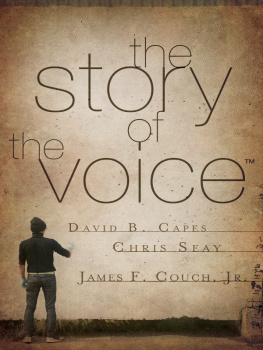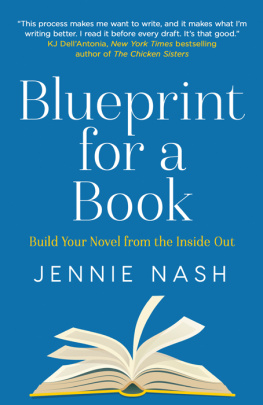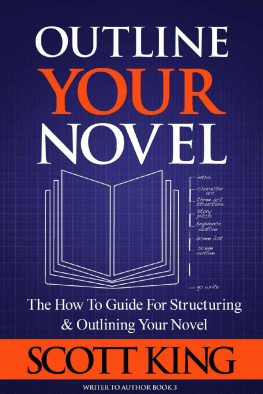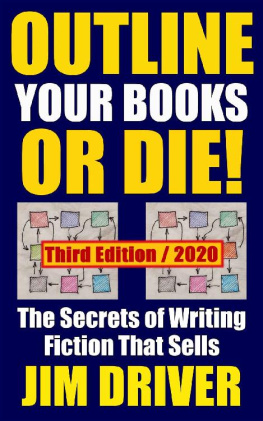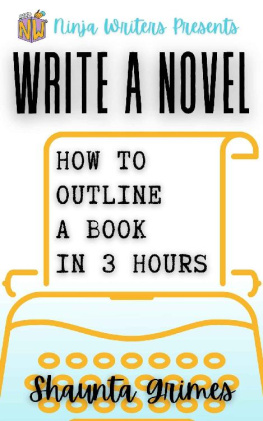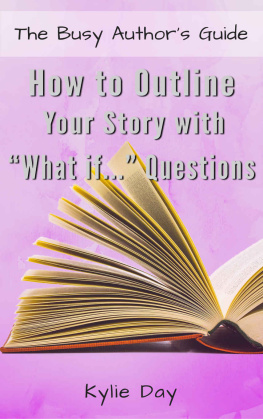Working with a Contemporary Step Outline: The tool of choice for story development
Includes the full step outline for the film story: Bella
by
David Baboulene
Copyright David Baboulene 2019
All rights reserved
The right of David Baboulene to be identified as the author of this work has been asserted in accordance with sections 77 and 78 of the Copyright, Designs and Patents Act 1988.
No part of this book may be reproduced by any means, nor transmitted, nor translated into a machine language, without the written permission of the publisher.
Published in 2019 by:
DreamEngine Media Group.
Email: publishing@dreamengine.co.uk
www.dreamengine.co.uk
No teacher can make you a writer if you do not live to write.
No authority that can stop you being a writer if you do.
David Baboulene
With thanks to the cast and crew of Bella A Love Story .
I could not have done it without you!
Caroline Jay
Luke and Lucie Rhoden
Lewis, Bradley and Oliver Rhoden
Carolyn Goodyear
Craig Hinde
Richard Oakes
Eamon Yates
Marc Zammit
Pete Rutherford
Alex Baboulene
Dan Baboulene
And to the wonderful supporters who contributed
to the crowdfund.
Contents
Section 1 -
Once upon a time
I set about a multimedia project to develop a story from the initial germ of an idea right through to getting a film up there on the big screen (or at least on Vimeo). Welcome to The Bella Project.
Bella is based out of my website at www.baboulene.com . You are almost certainly here right now because you started from there and are following the set path, however, if you have somehow arrived out of left field, fear not! This document works fine in its own context. However, you might like to go to the website and pick up on how we got here in the first place and where it all goes next. Indeed, unless you are reading this before the close of 2020, the whole project should be complete. The script should also be available for you to read and the final film of Bella should be available for viewing.
The main purpose of this multimedia project is to shine a light on how stories work and how an author can manage their inspiration and ideas to work them into the best final product they can possibly squeeze from that inspiration. The story is, of course, central to everything that happens. Every job, every role, every deal that is done in any area of story industry without a story there is nothing. Nothing to work on and no-one has a job, so finding a good story, and telling it to its absolute optimum is a jolly good idea for everyone concerned.
Understanding how stories work is essential if the story you love is going to be the one that gets delivered. One of the main problems for writers is that there is a strong wood for the trees effect in story development. The tiny nugget of gold that inspired you in the first place and from which all the value must be generated gets lost in the enormity of the development effort, particularly once collaborators get involved. I have seen many an author get lost in the detail, tangled in the options, frustrated by the nuance of their story and, once the script is written, I have seen many a story trampled to death in the rush to make a film. Identifying the beating heart in your story idea and having a reliable, proven method for keeping sight of it as you nurture a story into life is essential if you are going to deliver a finished story that retains the power and integrity of its inspiration.
One of the best tools available to an author in terms of managing a story development project is the step outline . It provides the method and mechanisms that manage the relationship between the initiating inspiration and the final text. The step outline works as a mediator, linking your creative self with your analytical self. Your imagination is casting all over the place and coming up with all sorts of possibilities, while your final product must be a meticulously composed and considered representation of your founding thoughts. The step outline is the tool that accepts, connects and works with the two extremes. It is also the fundamental tool of story design. By documenting not only what happens in a sequence with how you intend to deliver that story event in subtext , you create a reassuring measure of the story power within each event. This is priceless, because when you are no longer able to work with an event using pure instinct and inspiration, the objective elements in every step will give confidence to proceed when reassurance is needed.
This document is a sanitised version of my step outline for Bella . By which I mean it was an incomprehensible mass of notes and scribbles when being used. I have smartened it up to show the ideal form and added notes to explain it. In the normal course of a story development, nobody else will ever see your step outline, so do not be intimidated by mine. It has been honed for this document. Make it your focus to understand the job it is doing, then personalise it to your own preference and make it work for you. Do not worry about what you should or should not do. It is yours. Only you will ever see it. Adapt it to you.
1.1 Health Warnings
It is important that you realise that your own step outline will not become a valuable and accurate representation of your story overnight. I am showing you a finished set of steps. It should take you dozens of rewrites and months or even years of combing through before it settles into something that can firmly underpin your first full draft and which does not change any more. Do not think less of yourself if it does not form up into a perfect step outline very quickly. Thats normal.
Most of us get our initial confidence as a writer from short work; say, less than 5000 words. We get an article published or a blog post does well, or we greatly enjoy the essay-based tasks at university when everyone else hates them. When we are writing it and we sense that things are not right, its simple. We rewrite the whole damn thing. Not a problem. We learn to write by rewriting. The Rewrite Technique becomes our method. And it works. The trouble is, this is not a good strategy for a full-length work.
Many authors first full length work is written using the rewrite method. However, because the story is highly inspired and has been worked in mind for years and years, they do often manage to complete the manuscript. But it's hard work. I have worked with many authors who give up on their first full length work because it simply becomes unmanageable. A 2-hour feature or a 100,000 word novel might need 10 rewrites. They lose all perspective on it, put the whole miserable event down to experience and move on to their second work. A couple of novels or scripts later, once they have a more considered method of story development, they revisit that original story and deliver it beautifully as a third or fourth novel. Professional writers rarely continue with the rewrite method. Inspiration reduces over time as the driving force and they adopt a more professional approach. For me, there is none better than beginning with a step outline, and developing your own version of it over time.
The Old School
The original method of working with a step outline is around 100 years old. It goes back to the days when writers would use what are called index cards. Small, A5 size cards, each one used to represent a story event. When the creative process threw up an interesting possibility, the writer would note it in summary form on the front of an index card. As they began to get some feel for how they might deliver that event they would expand it into more detail on the back of the index card.



